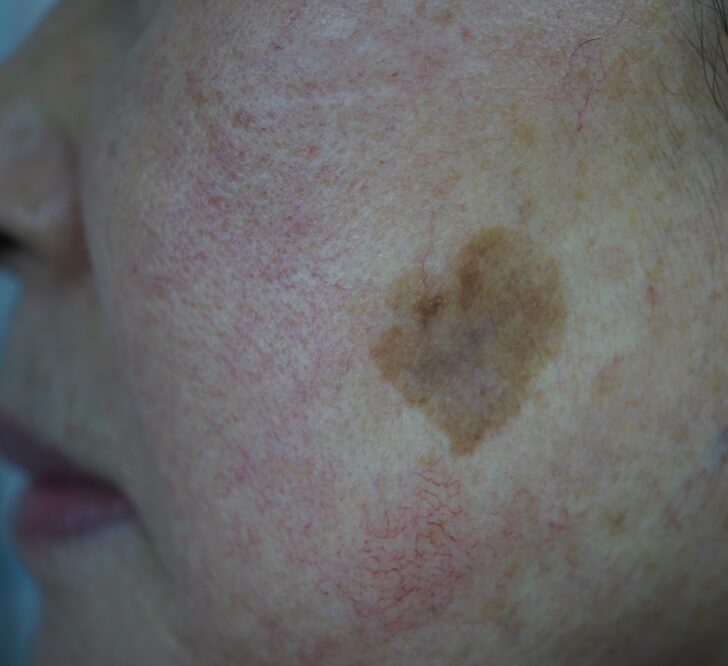SEBORRHOEIC KERATOSIS TREATMENT FROM DERMCONSULT
Do you have multiple Seborrhoeic Keratosis that you need removing? Want to know how to safely and effectively treat them? We can help with a bespoke skin treatment plan – book a consultation now!
Book A Consultation
LEARN MORE ABOUT SEBORRHOEIC KERATOSIS
Seborrhoeic keratoses are benign (harmless), warty growths on the skin that are often pigmented and result from a build-up of ordinary skin cells. They are very common, increasingly so with age. Often they are considered a nuisance as they can itch, catch on clothing and become inflamed. Some also find them to be unsightly, particularly when they appear on the face. Seborrhoeic keratoses can appear anywhere on the skin with the exception of the palms and soles. Individuals can have multiple seborrhoeic keratoses.
WHAT CAUSES SEBORRHOEIC KERATOSIS?
There is no known exact cause of seborrhoeic keratosis and despite their name, they are nothing to do with sebaceous glands or viral warts. Research has shown that:
- Eruptive seborrhoeic keratosis can follow sunburn or dermatitis.
- It is not hereditary, however, the tendency to have a higher amount of seborrhoeic keratosis can run in families.
- They may appear in body folds as a result of skin friction.
- They aren’t infectious and do not become malignant.
- As time goes by they become more numerous.
- Seborrhoeic keratosis can arise from solar lentigo.

Expertise
Before & After Treatment
Our Fees
We’re Always Transparent About Cost
HOW IS SEBORRHOEIC KERATOSIS DIAGNOSED?
The appearance of the lesion combined with the patient’s story is often enough to confirm a seborrhoeic keratosis. They may bear some resemblance to a skin cancer however, which means an instrument called a dermatoscope may be used by an expert to distinguish between the two. If doubt persists, a biopsy (sample) or total diagnostic removal of the lesion may be required for close inspection under a microscope.
HOW IS SEBORRHOEIC KERATOSIS TREATED?
As they are benign, seborrhoeic keratoses don’t need to be treated. Nevertheless, if they are cosmetically unpleasant or causing symptoms such as itching they can be removed. A number of possibilities exist, including cryotherapy (freezing with liquid nitrogen),
curettage (scraping with a sharp instrument) and laser surgery. The NHS often does not fund these treatments. The treatment can sometimes cause a change of pigmentation of the underlying skin. Careful administration by an expert is important to prevent issues with these treatments.
Rejuvenate Your Skin
Think you might need SEBORRHOEIC KERATOSIS treatment?
If you are suffering from seborrhoeic keratosis, simply get in touch and book your consultation with our friendly team. At DermConsult we’re committed to providing the very best quality care and a personalised service for each and every one of our patients. Our experienced consultant dermatologists have a dynamic and forward-thinking approach, applying the best recent evidence when diagnosing and treating their patients.

